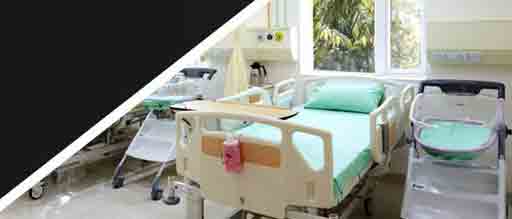INVC NEWS
Mumbai : The Astrology and Vastu Shastra play a significant role in our lives, offering solutions to a multitude of problems. By adopting the measures suggested in these ancient sciences, you can resolve various issues effectively. While Vastu principles are commonly considered for homes and businesses, they are equally important for hospitals. Applying Vastu Shastra rules during hospital construction can prevent common conflicts and improve the overall environment.
Key Vastu Shastra Guidelines for Hospital Construction
Ideal Direction for the Main Gate
The main entrance of the hospital should face the east, northeast, or north direction. These orientations are believed to attract positive energy and ensure a welcoming atmosphere for patients and visitors.
Optimal Placement for Nursing Homes
For nursing homes within the hospital, the best directions are east or north-facing. This positioning is thought to enhance the healing environment and facilitate better patient care.
Doctor’s Room Orientation
The doctor’s room, where patients are examined, should be situated in the north direction. Additionally, the doctor’s seat should be arranged so that they face east or north while consulting with patients. This setup is believed to promote clarity and effective communication.
Patient Waiting Area
The waiting room for patients should ideally be in the south direction. This area should be comfortable and calming, helping to reduce anxiety and stress for patients awaiting consultation.
Patient Wards and Recovery Rooms
Patient rooms or wards should be located in the north, west, or northwest directions. For critical or emergency patients, the northwest direction is considered optimal, as it is believed to support quicker recovery during treatment.
Proper Orientation for Patient Beds
When constructing patient wards, ensure that the patient’s head is not positioned towards the north. The recommended directions for the head are east, west, or south to promote better health and faster recovery.
Drinking Water Arrangement
It is beneficial to place the drinking water facility in the northeast corner of the hospital. This location is believed to maintain purity and enhance the flow of positive energy.
Toilet and Bathroom Locations
Toilets should be placed in the west or south direction, while bathrooms are best positioned in the east or north. This arrangement helps maintain hygiene and comfort for patients and staff.
Operation Theatre Placement
The operation theatre should be located in the west direction. It is also crucial that the surgeon faces east or north while performing surgeries to ensure precision and success.
Positioning of Medical Equipment Rooms
Rooms housing X-ray machines, ECG, and other electrical equipment should be in the southeast corner of the hospital. This placement is thought to manage the energy flow effectively and prevent disruptions.
Avoiding Beams Over Critical Areas
Ensure that there are no beams directly above the patient’s bed, examination tables, doctor’s chairs, or operation tables. Vastu Shastra suggests that being under a beam can delay recovery and create discomfort.
Stairs Location
Stairs in the hospital should be positioned in the west, southwest, southeast, or northwest corners. This helps in maintaining a smooth flow of energy and ensuring ease of movement within the hospital.
Floor Slope Considerations
Regardless of the hospital’s orientation, the floor slope should be towards the east or north according to Vastu Shastra. This subtle detail is believed to facilitate positive energy circulation throughout the facility.
Enhancing Hospital Harmony with Vastu Shastra
Incorporating Vastu Shastra principles into hospital construction and layout can significantly impact the environment and patient outcomes. By paying attention to directions and placements, you can create a healing space that promotes health, comfort, and well-being. Whether you are building a new hospital or renovating an existing one, these guidelines can help you achieve an optimal setup for both patients and healthcare professionals.




















